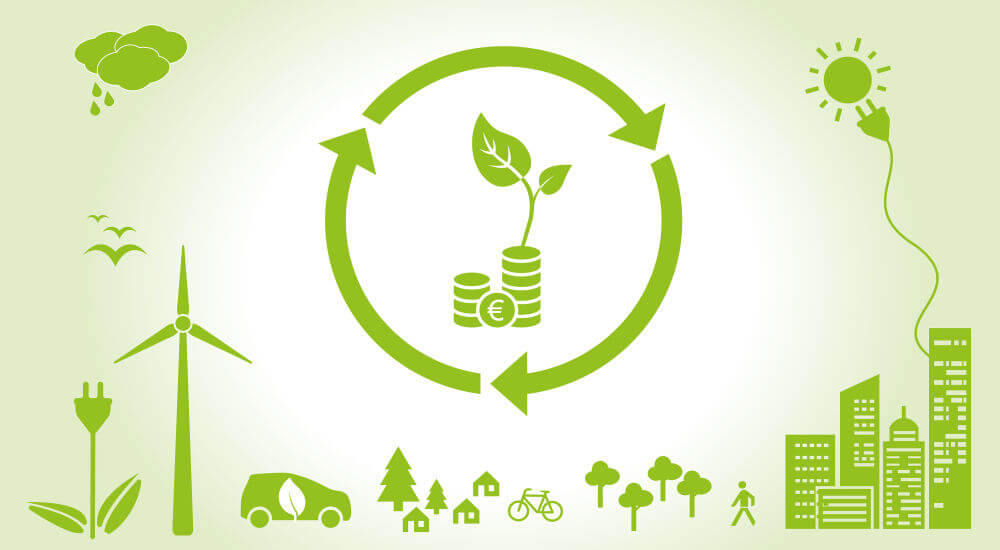In an era defined by mounting environmental challenges and heightened awareness of climate change, the concept of green finance has emerged as a crucial tool for promoting environmental sustainability within business operations. By aligning financial decisions with environmental objectives, companies can not only mitigate risks associated with climate change but also capitalize on opportunities for innovation, growth, and long-term resilience. This article explores the importance of green finance and strategies for integrating environmental sustainability into business practices.
Understanding Green Finance
Green finance encompasses financial products, services, and investments that support environmental sustainability and contribute to the transition to a low-carbon economy. This includes initiatives such as renewable energy projects, energy-efficient infrastructure, sustainable agriculture, and green bonds. The overarching goal of green finance is to mobilize capital towards environmentally beneficial activities while reducing the financial sector’s exposure to climate-related risks.
Importance for Businesses
Integrating environmental sustainability into business strategies is no longer optional but imperative for long-term success. Companies that fail to address environmental risks and opportunities face reputational damage, regulatory scrutiny, supply chain disruptions, and financial losses. Embracing green finance offers several key benefits for businesses:
Risk Mitigation: Climate change poses significant risks to businesses, including physical risks (e.g., extreme weather events, natural disasters), regulatory risks (e.g., carbon pricing, emissions regulations), and reputational risks (e.g., public backlash against unsustainable practices). By incorporating environmental considerations into financial decision-making, companies can better identify, assess, and mitigate these risks.
Cost Savings: Adopting sustainable practices can lead to cost savings through improved resource efficiency, reduced energy consumption, and lower operating expenses. Investments in renewable energy, energy-efficient technologies, and waste reduction initiatives can yield long-term financial benefits while reducing environmental impact.
Market Opportunities: Consumer preferences are increasingly shifting towards sustainable products and services, creating opportunities for businesses that prioritize environmental sustainability. By catering to this growing market demand, companies can gain a competitive advantage, enhance brand reputation, and capture new market segments.
Access to Capital: Investors, lenders, and financial institutions are increasingly integrating environmental criteria into their decision-making processes, favoring companies with strong environmental performance and sustainability goals. Accessing green finance opportunities, such as green bonds, sustainable loans, and impact investments, can provide companies with additional sources of capital and favorable terms.
Strategies for Integration
To effectively integrate environmental sustainability into business strategies, companies can adopt the following strategies:
Set Clear Environmental Goals: Establish measurable environmental targets aligned with international frameworks such as the United Nations Sustainable Development Goals (SDGs) and Science-Based Targets initiative (SBTi). These goals should encompass areas such as carbon emissions reduction, resource conservation, waste management, and biodiversity preservation.
Embed Sustainability Across Value Chain: Assess the environmental impact of business operations across the entire value chain, from sourcing raw materials to manufacturing, distribution, and end-of-life disposal. Collaborate with suppliers, customers, and partners to implement sustainable practices and drive positive environmental outcomes throughout the supply chain.
Invest in Green Technologies: Allocate resources towards investments in renewable energy, energy-efficient technologies, and sustainable infrastructure projects. Evaluate the financial viability and environmental benefits of green initiatives, taking into account factors such as return on investment (ROI), payback period, and long-term sustainability.
Enhance Reporting and Transparency: Communicate environmental performance, progress towards sustainability goals, and green finance initiatives through transparent reporting mechanisms such as sustainability reports, ESG (Environmental, Social, and Governance) disclosures, and carbon footprint assessments. Engage stakeholders, including investors, customers, employees, and communities, in dialogue about environmental stewardship and corporate responsibility.
Foster a Culture of Sustainability: Cultivate a corporate culture that values environmental sustainability, innovation, and continuous improvement. Empower employees to contribute ideas, initiatives, and best practices for reducing environmental impact and promoting sustainability in their daily work activities.
Conclusion
Green finance represents a paradigm shift in the way businesses approach financial decision-making, integrating environmental considerations into core business strategies and operations. By embracing green finance, companies can mitigate climate-related risks, capitalize on market opportunities, and demonstrate leadership in environmental stewardship. By aligning financial interests with environmental sustainability goals, businesses can drive positive environmental outcomes while creating long-term value for shareholders, stakeholders, and society as a whole.








